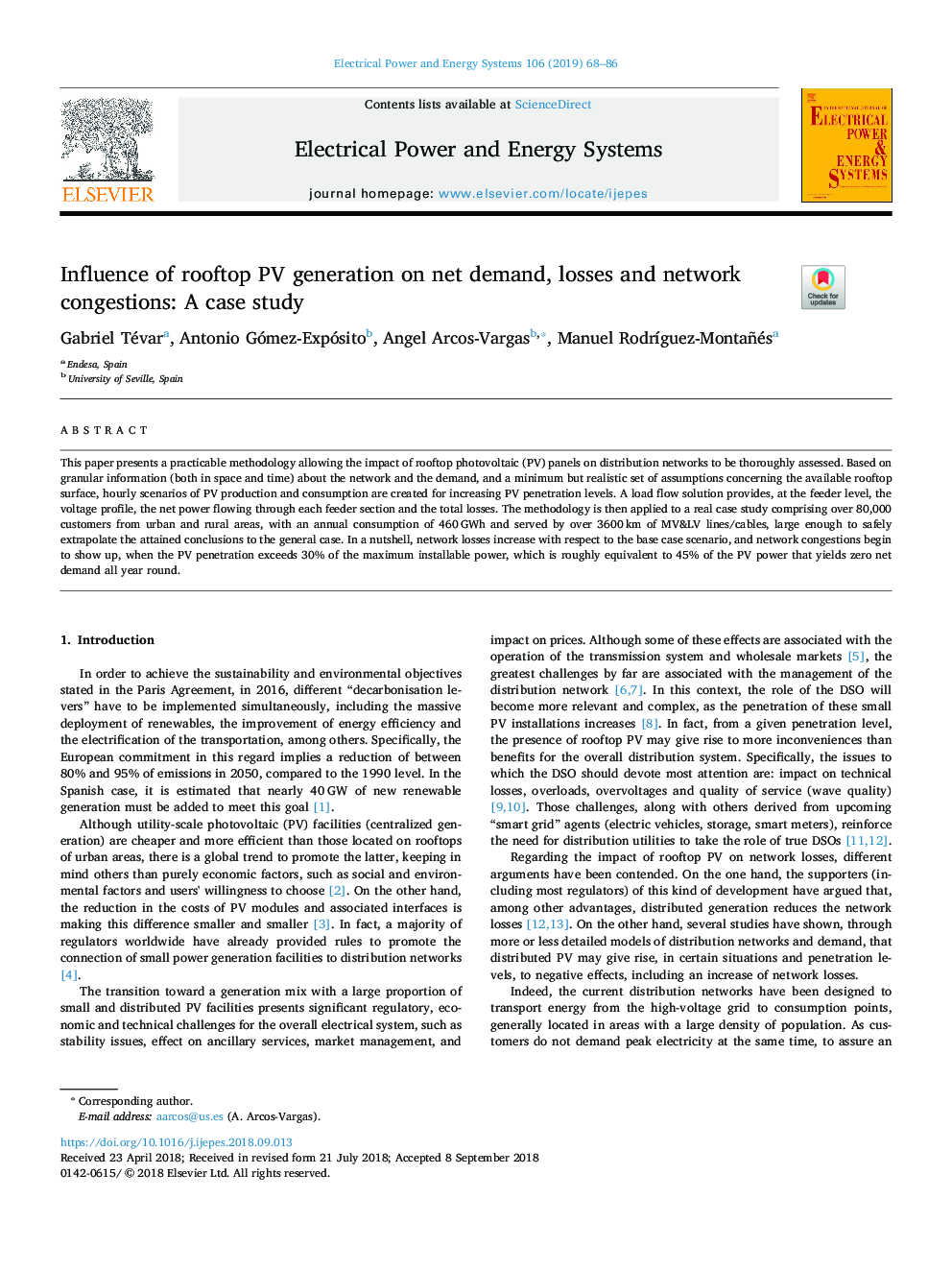| Article ID | Journal | Published Year | Pages | File Type |
|---|---|---|---|---|
| 11016475 | International Journal of Electrical Power & Energy Systems | 2019 | 19 Pages |
Abstract
This paper presents a practicable methodology allowing the impact of rooftop photovoltaic (PV) panels on distribution networks to be thoroughly assessed. Based on granular information (both in space and time) about the network and the demand, and a minimum but realistic set of assumptions concerning the available rooftop surface, hourly scenarios of PV production and consumption are created for increasing PV penetration levels. A load flow solution provides, at the feeder level, the voltage profile, the net power flowing through each feeder section and the total losses. The methodology is then applied to a real case study comprising over 80,000 customers from urban and rural areas, with an annual consumption of 460â¯GWh and served by over 3600â¯km of MV&LV lines/cables, large enough to safely extrapolate the attained conclusions to the general case. In a nutshell, network losses increase with respect to the base case scenario, and network congestions begin to show up, when the PV penetration exceeds 30% of the maximum installable power, which is roughly equivalent to 45% of the PV power that yields zero net demand all year round.
Related Topics
Physical Sciences and Engineering
Computer Science
Artificial Intelligence
Authors
Gabriel Tévar, Antonio Gómez-Expósito, Angel Arcos-Vargas, Manuel RodrÃguez-Montañés,
